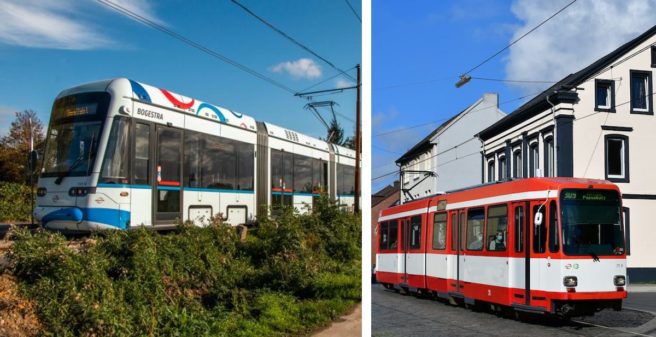
The new track connection between Bochum Langendreer and Witten has been completed and the new tram connection opened for service. This means that an important element of the new Bochum-Gelsenkirchen 2020 tramway (BoGeStra) network strategy has been put into operation. The 2.6 km long new line replaces the older route which ran through forests and fields in Papenholz. Although some popular photo spots of the tram will disappear for tram enthusiasts, the residents of the new route between Witten and Langendreer and the university hospital will be connected in a much better way to Bochum city. Interesting fact: Until the 1950s and 1960s, Langendreer and Witten were already connected by several tram lines from the surrounding municipalities. However, the wave of tram closures lead to the end for many interurban lines. The new alignment of the lines 309/ 310 are therefore also a sort of revival. The new infrastructure will strengthen and modernise the tramway in the eastern Bochum area as a future-proof and modern means of transport.
Picture gallery (please click to open):
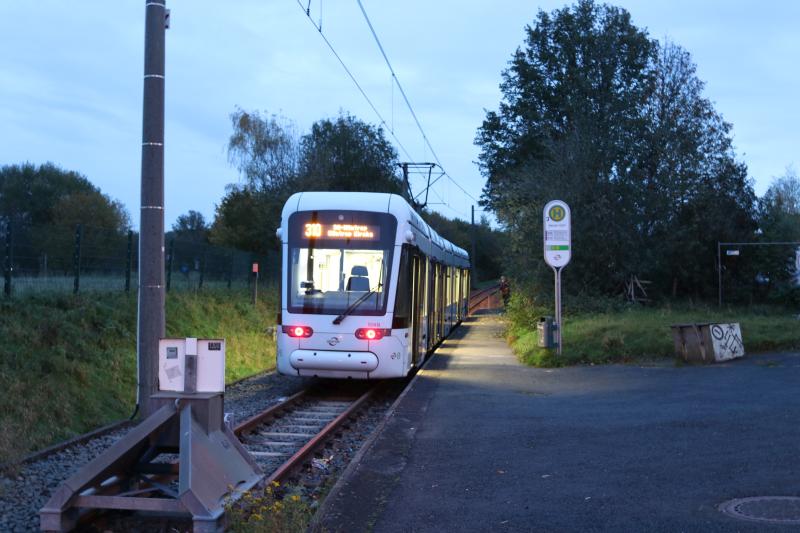
The first circulation on 1 November 2020: Variotram at the terminal in Heven Dorf I © Tim Rümmel 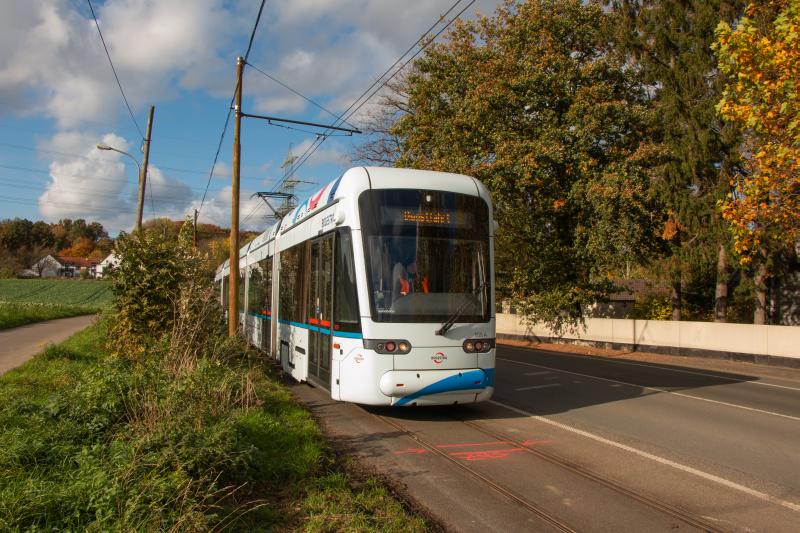
In October test runs were carried out on the new and old alignment to Heven I © Jan Rümmel 
Variotram on the old alignment with the now connected new line in the background on the right and the old line running straight ahead I © Jan Rümmel 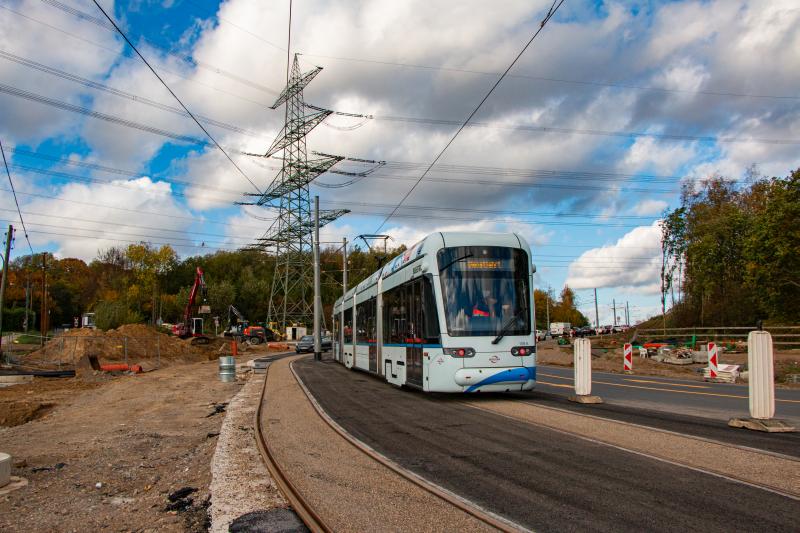
Picture taken shortly after the new line was connected to the old alignment which ran towards the forest on the right-hand side of the picture I © Jan Rümmel
Unfortunately, due to the pandemic situation, the inauguration took place without any opening activities (neither ceremonies nor free rides) which were originally planned. The first grinding and test runs on the new lines and on the connecting track have already taken place during the past weeks.
Eight years construction time
In October 2012, track construction work began on the extension of tram line 310 from Bochum to Witten and has now been completed. Regular tram services started on 1 November 2020. The replacement bus service between Bochum-Langendreer and Heven Dorf ended on Saturday, 31 October 2020. Further construction work in the road area will continue. The Papenholz tram stop can only be opened to traffic once the work in the road area has been completed. In 2028 the routing of the tram section between Papenholz and Crengeldanz will be renewed with the construction of a new railway bridge.
Picture gallery (please click to open):
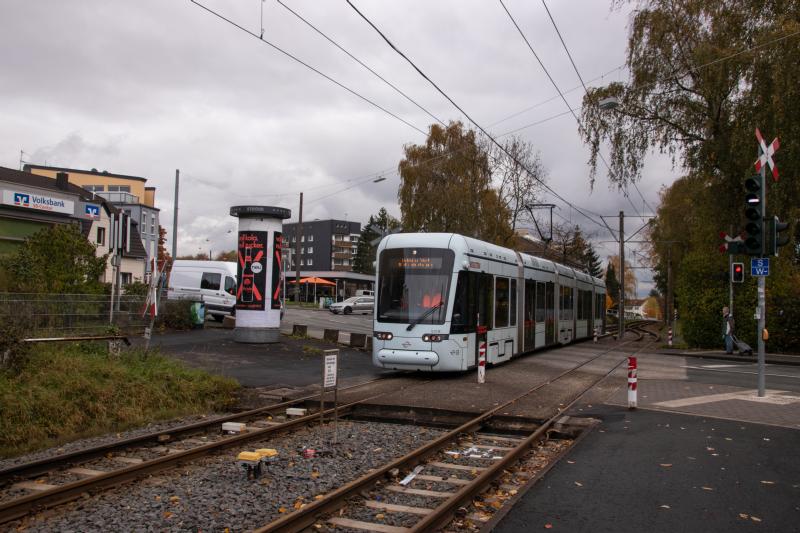
For the first time the Variotrams are running into Witten – here on a test drive I © Tim Rümmel 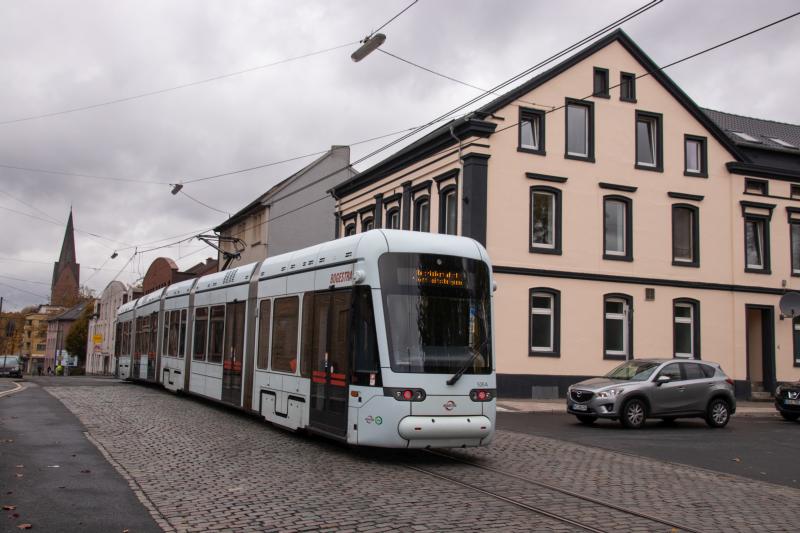
A well-known photo position: Variotram in the Herbeder Straße in Witten I © Tim Rümmel
New vehicles and new routing
The Variotrams which are 100% low-floor trams, took over the operation on lines 309/310 to Witten and Heven Dorf. They replace the 40-year-old Düwag M6S trams, which were still in use until the end of September on the old Crengeldanz – Heven Dorf line in shuttle service.
Until now, line 310 from Bochum ran along Wittener Straße before the trams turned right onto Universitätsstraße after the Unterstraße stop at the intersection of Universitätsstraße and Wittener Straße. From there, line 310 started its single-track journey via Baroper Straße along the stops “Im Ümminger Feld”, “Kaltehardt”, “Urbanusstraße” and “Am Honnengraben”. From the “Papenholz” stop, the route leads along Bochumer Straße into the Witten urban area.
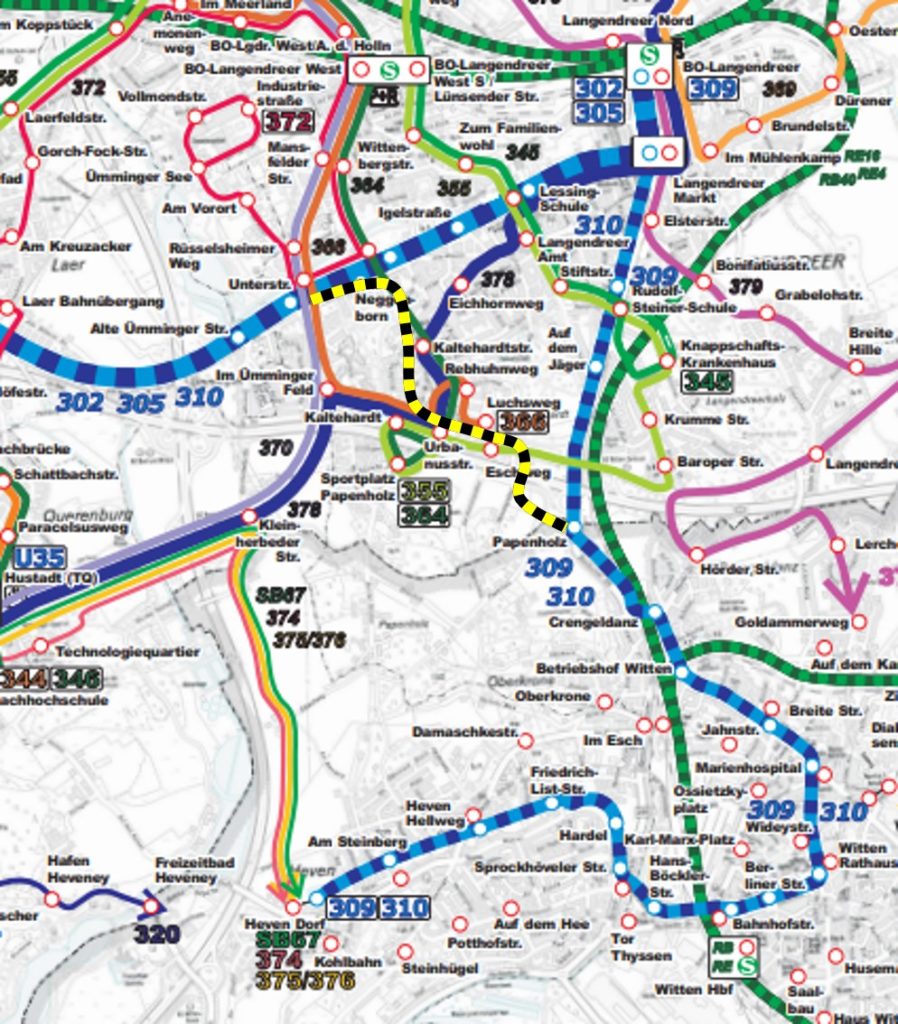
After the extension, the new 310 line leaves its conventional tracks at the intersection of Universitätsstraße/Wittener Straße to continue straight ahead along Unterstraße in the direction of Langendreer Markt. This will provide better connections to the tram in the relevant districts. From Langendreer Markt, the line turns south onto the main road and continues to Witten Papenholz, where the new line was connected to the existing tracks in the beginning of October 2020. The new line has a length of 2.6 km.
In addition to the new track and catenary, the underground supply and disposal lines were also renewed. In total, the new line cost circa 62 million Euros.
Lines 309 and 310 run in 30-minute intervals. Line 310 (Bochum-Wattenscheid-Höntrop – Witten-Heven) runs from Monday to Sunday, line 309 (Bochum-Langendreer – Witten-Heven) from Monday to Saturday. This results in a 15-minute interval in times of high demand.
The new line is part of the new BoGeStra network, which has been launched in December 2019. We reported here:
The end for the last Düwag M6S trams
The inauguration of the new infrastructure and the launch of the Variobahn trams on lines 309 and 310 also means the final end of the legendary Düwag M6S trams in Bochum. After the network change on 15 December 2019, there was a “grace period” until 1 April 2020 when the remaining island operation between Papenholz and Heven Dorf was replaced by bus replacement services. The Papenholz – Unterstraße section of the line served as an operational line to connect to the depot. From 22 June to 27 September 2020, the M6S operation was revived once again for the very last time. In the end, six M6S railcars were part of the BoGeStra tram fleet.
Picture gallery (please click to open):
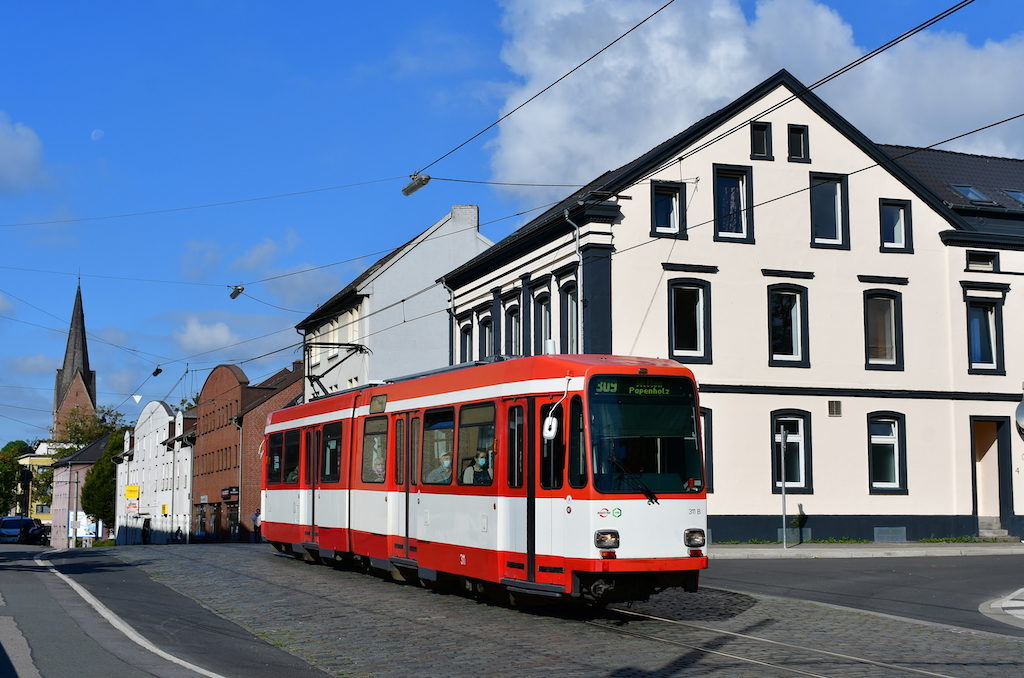
Same position as above, here seen with the M6S tram car 311 in August 2020 I © Krystian Jacobson 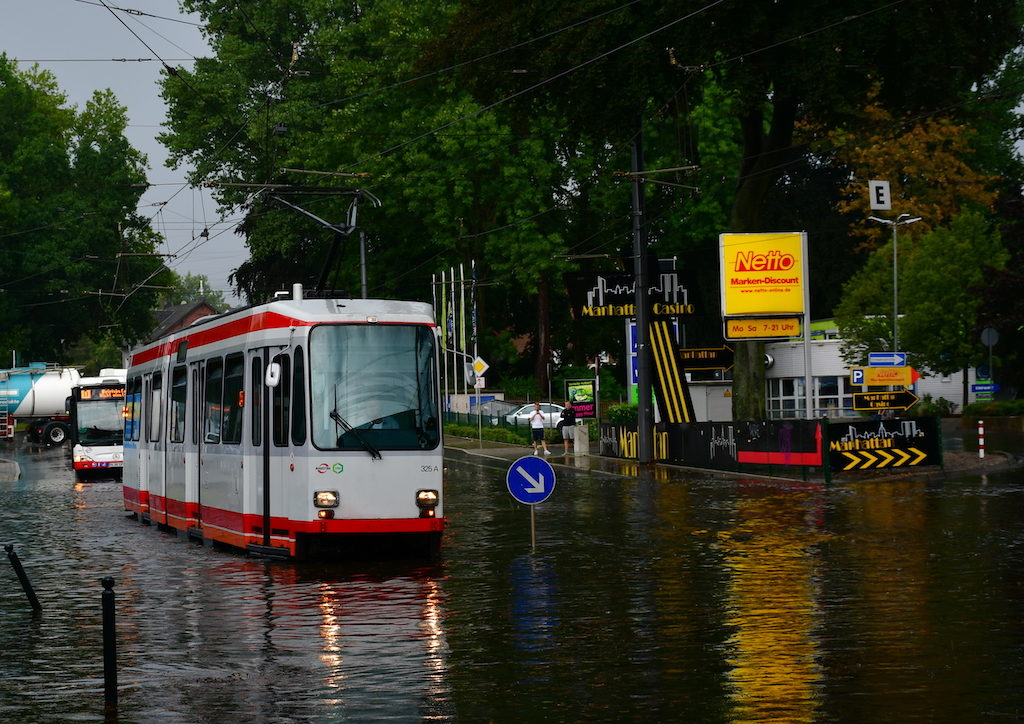
Also suitable for water: the robust Düwag M6S also coped with small “floods” – August 2020 in Witten I © Krystian Jacobson 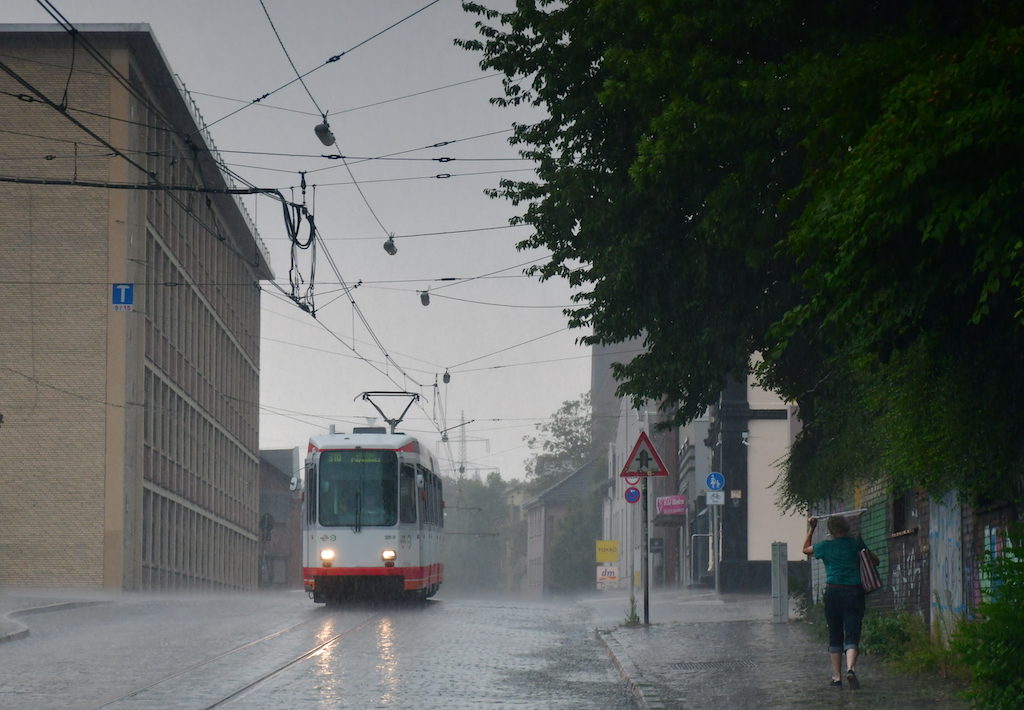
The opearion of the last M6S trams ended on 27 september 2020 I © Krystian Jacobson 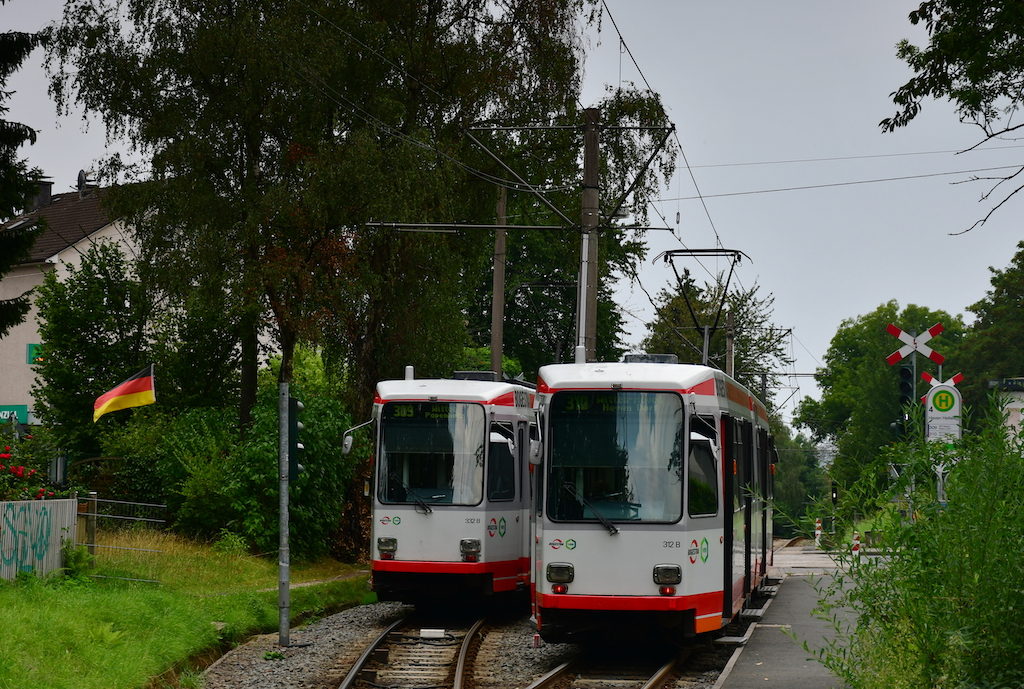
Part of the now closed line was single-track and equipped with turnouts I © Krystian Jacobson
One of the last M6S is the one in the red-and-white light rail (“Stadtbahn”) vehicle livery. The fate of the remaining M6S is not yet known. Also the era of the Düwag low-floor trams of the type MGT6D is now almost over. With the exception of two trams (401 and 421), all railcars have been sold to Łódź in Poland in recent years. BoGeStra’s tram fleet thus now consists exclusively of 87 Stadler Variobahn trams. Eight more will be delivered in mid 2021 so that there will be a total of 94 Variobahn vehicles.
Picture gallery (please click to open):
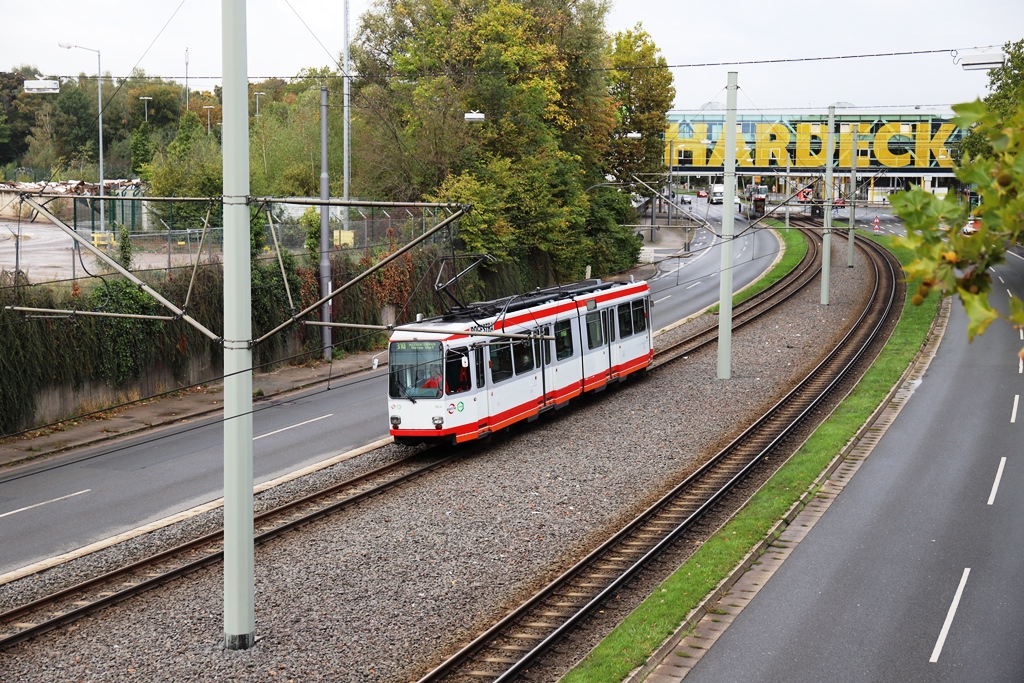
Once prepared for the standard gauge light rail: M6S in September 2019 at the Unterstraße stop I © Stefan von Mach 
This route has not been used since 27 September: M6S in Baroper Street I © Stefan von Mach 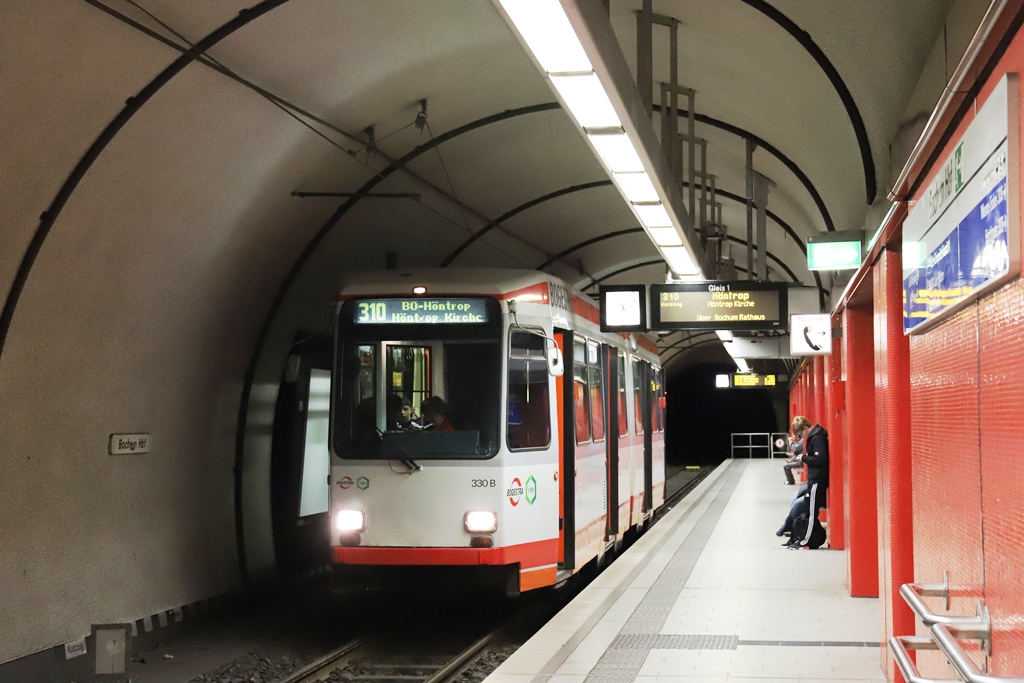
M6S in Bochum main station – today only Variobahn trains run here I © Stefan von Mach
Historic route network
The trams east of Bochum have a long history. Originally, there were five different municipal tram companies on the current Bochum-Gelsenkirchen tram network. The line from Langendreer Nord station via Witten to Bommern was opened on 5 January 1899 by the then Märkische Straßenbahn. Further line openings followed at the turn of the century to connect the villages and towns in the surrounding area to the big city. On 5 May 1912, the small tram companies between Bochum and Dortmund were merged under the Westphalian Tramway (“Westfälische Straßenbahnen”), creating a network of almost 55 km between Castrop-Rauxel, Laer, Witten and Herbede/Bommern. The extension from Witten to Herbede via Heven was opened in 1929. Commonly operated tram lines existed with neighbouring tram companies such as the BoGeStra in Bochum were part of the system.
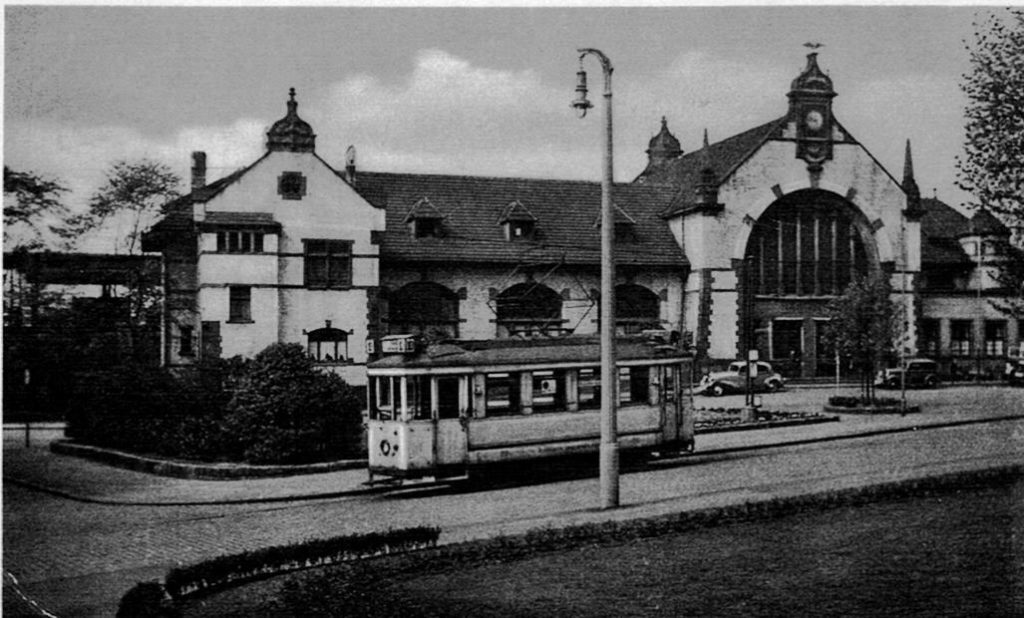
Motor car of the “Westfälische Straßenbahn” in 1938 at Witten railway station I © Postkarte (Verlag Hermann Lorch)/ Wikipedia/ Manfred Kopka
Due to economic difficulties, the BoGeStra took over the tram operations of the “Westfälische Straßenbahn” in 1937. In the 1960s, the tram network was massively reduced. On 30 June 1969 the line 20 branch Laer – Langendreer was closed down and has now been resurrected as an extension of line 302 between Laer and Langendreer (see above). On 28 May 1972 the tram section between Heven Dorf and Herbede of line 12 was eventually closed down. Since then, Heven Dorf has been the terminus. At the end of the 1960s, an extensive normal-gauge light-rail (“Stadtbahn”) network was designed for the Ruhr area and neighbouring cities. The objective was to replace all (metre-gauge) trams and convert the main lines to metro-type operation. In addition to the U35 (Schloß Strünkede – Riemke Markt – Hustadt) which opened in 1989. Witten (as an extension of the U35) and Laer/Langendreer (as U21) were also to be connected to the normal gauge network. As a preparation, the present tram infrastructure was prepared for light-rail operation. The implementation was discontinued in the 1990s, mainly for financial reasons, so that metre-gauge tram operation will continue to be an important backbone of Bochum-Gelsenkirchen’s public transport in the future.
Further information on Bochum’s tram and light-rail network can be found here:
http://www.urbanrail.net/eu/de/bo/bochum.htm
02.11.2020
